Have you ever heard of the Diphylleia Grayi, more commonly known as the Skeleton Flower? This rare and unique flower is a true wonder of nature with its translucent white petals. But there’s more to this flower than meets the eye. Let’s delve into the world of the Skeleton Flower and explore its origins, symbolism, and the myriad fascinating facts surrounding it.
1 Introduction to the Skeleton Flower
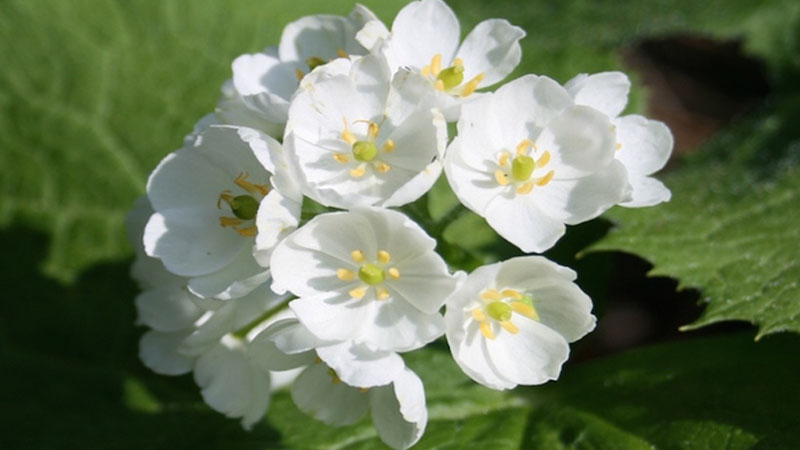 Skeleton Flowers thrive in temperate mountainous regions
Skeleton Flowers thrive in temperate mountainous regions
The Skeleton Flower, scientifically known as Diphylleia Grayi, was first discovered in Japan in 1803. This rare flower is distinguished by its translucent petals, blooming only in July each year.
Skeleton Flowers thrive in areas with low light and high humidity, which is why they are typically found in mountainous regions, temperate forests, and highlands where tall trees provide ample shade.
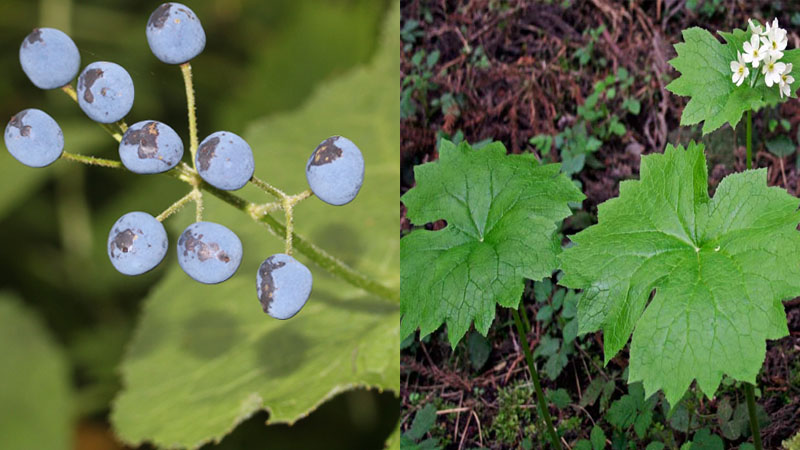 The flower buds are encased in a pale purple shell, with large leaves
The flower buds are encased in a pale purple shell, with large leaves
When the Skeleton Flower first appears, it is nestled within a pale purple shell, resembling a blueberry. However, as it blooms, its petals transform into an opaque white, akin to the Ban flowers of Northwest Vietnam. And here’s the truly magical part: with just a few drops of water, the petals gradually turn translucent, resembling crystal-clear glass.
The Skeleton Flower typically grows close to the ground, with stems reaching up to 20cm in length and large, toothed leaves that embrace the delicate flowers.
2 Symbolism of the Skeleton Flower
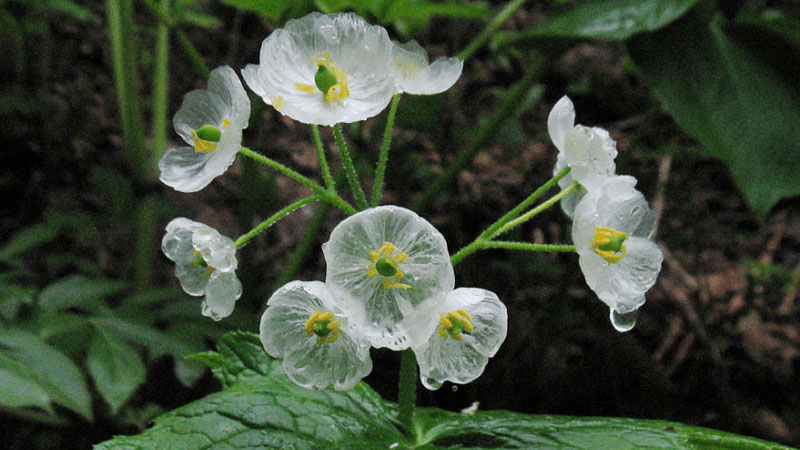 The Skeleton Flower represents purity and innocence
The Skeleton Flower represents purity and innocence
The delicate beauty of the Skeleton Flower evokes a sense of fragility, innocence, and purity, often associated with the virtues of a devoted wife and a woman of integrity.
Its transformation from purple to opaque white and then to translucent symbolizes growth, perseverance, and the pursuit of perfection.
In the realm of love, the Skeleton Flower is likened to first loves—pure, innocent, yet fragile and vulnerable.
3 Uses of the Skeleton Flower
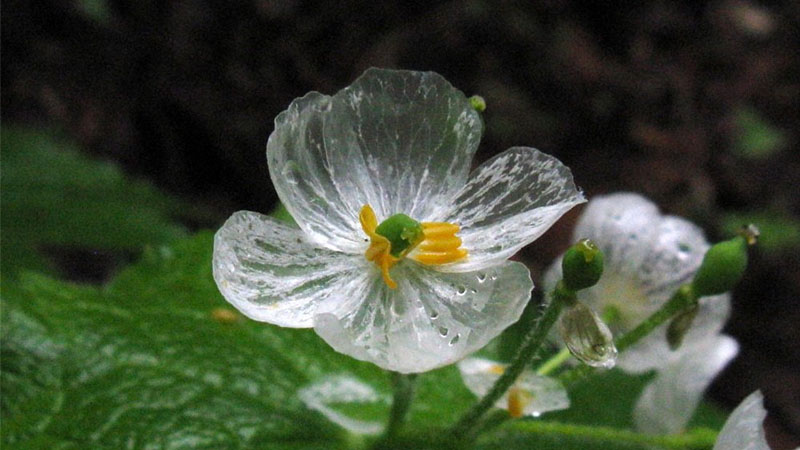 The Skeleton Flower has been used in traditional medicine for centuries
The Skeleton Flower has been used in traditional medicine for centuries
The Skeleton Flower has long been valued in traditional medicine for its ability to enhance blood circulation and detoxify the body. In mountainous regions, the leaves of the plant are used as an effective antidote for snakebites.
Of course, the Skeleton Flower is also prized for its decorative value, with its rare and exquisite beauty.
4 Places to Admire the Skeleton Flower
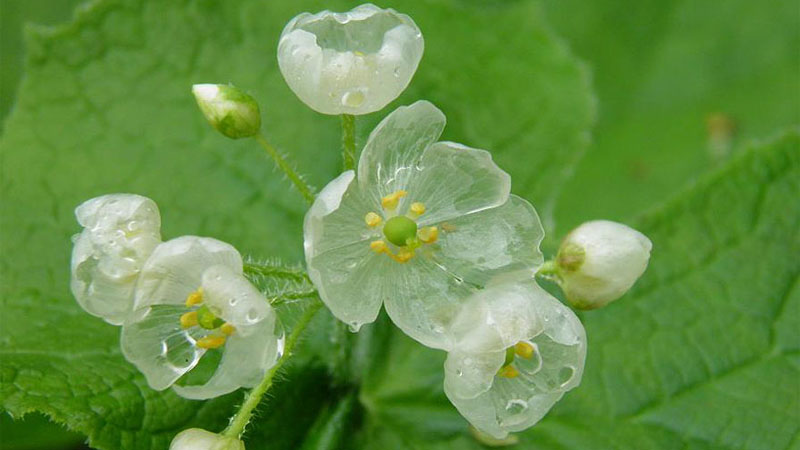 The flower is concentrated in just three locations worldwide
The flower is concentrated in just three locations worldwide
Catching a glimpse of the translucent Skeleton Flower is no easy feat.
Given its preference for cool, humid climates, the Skeleton Flower flourishes in July and can be found in only three locations worldwide: the Appalachian Mountains in eastern North America, Hokkaido in Japan, and Yunnan in China. Unfortunately, this exquisite flower is not native to Vietnam.
5 Captivating Photos of the Skeleton Flower
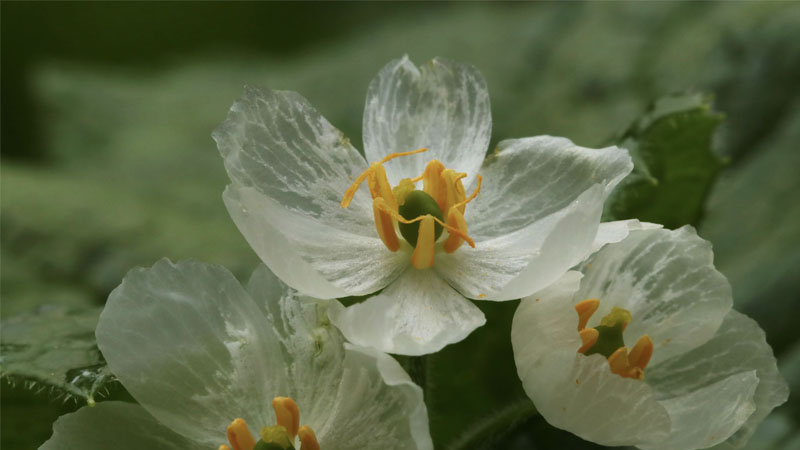 The petals turn translucent with just a touch of water
The petals turn translucent with just a touch of water
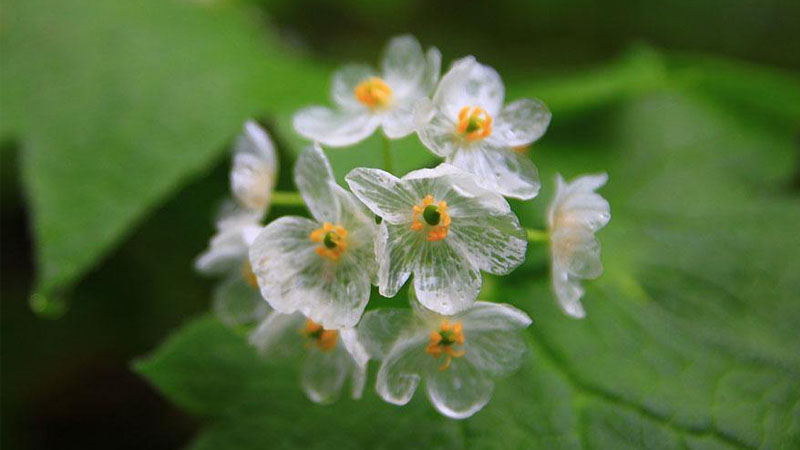 The flowers often grow in clusters on stems about 20cm tall
The flowers often grow in clusters on stems about 20cm tall
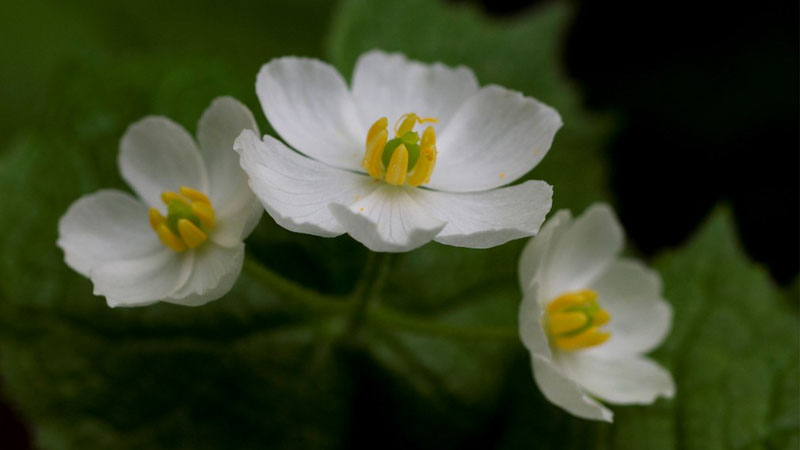 When in bloom, the flowers are opaque white with yellow stamens
When in bloom, the flowers are opaque white with yellow stamens
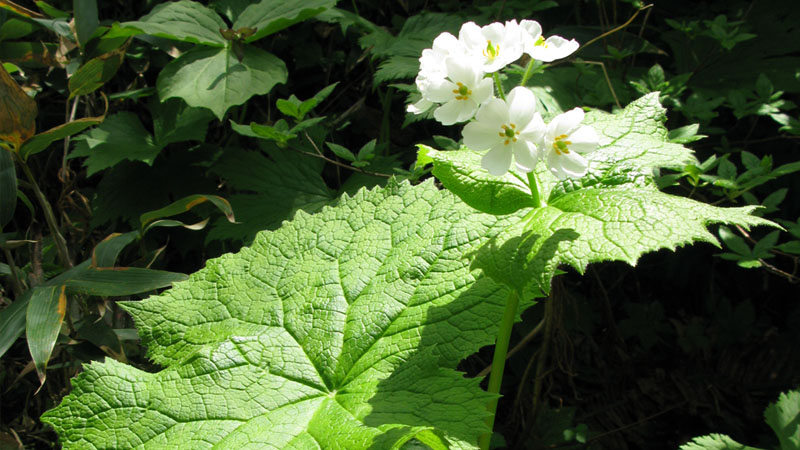 Each cluster typically consists of 7-9 flowers
Each cluster typically consists of 7-9 flowers
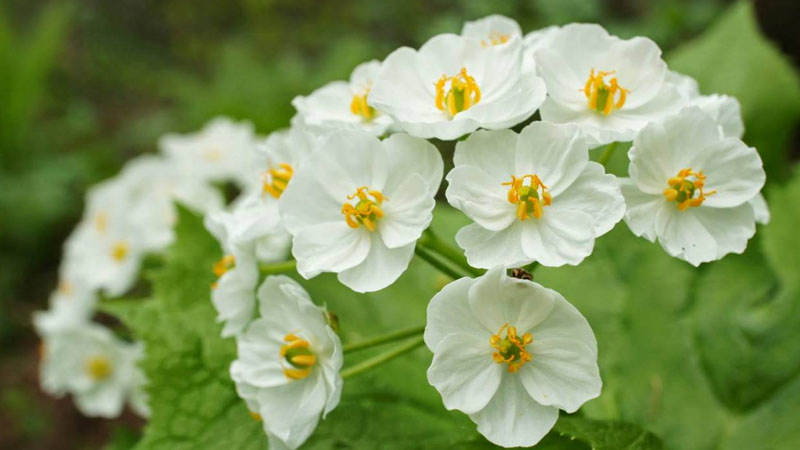 The best time to admire the flowers is in July
The best time to admire the flowers is in July
We hope you enjoyed learning about the Skeleton Flower, a truly unique and mesmerizing creation of nature. If you wish to behold its beauty in person, be sure to visit the locations mentioned above during the month of July.



































